The flavors of Quezon province
Coconut-based dishes are definitely aplenty in Quezon – from pinais to ginatang suso. This comes as no surprise, as coconut is one of the dominant crops in the province, with 315, 545 has. of land allotted to the “tree of life.”
But there are other delicious dishes to taste in the province. Other famous food items in Quezon are the pansit habhab and the breakfast favorite Lucban longganisa.
During “Biyahe ni Drew’s” visit, host Drew Arellano and the BND crew explored the different towns of Quezon – Lucban, Tayabas, Lucena and Sariaya – and discovered the different flavors the province can truly boast about.
Go nuts with coconuts!
First on the list of coconut dishes is pinais, a dish made from grated coconut meat, apta, and kamamba leaves, and wrapped in banana leaf. It has a sweet and smoky flavor brought by the combination of coconut milk and the kamamba leaf placed on top of the dish.
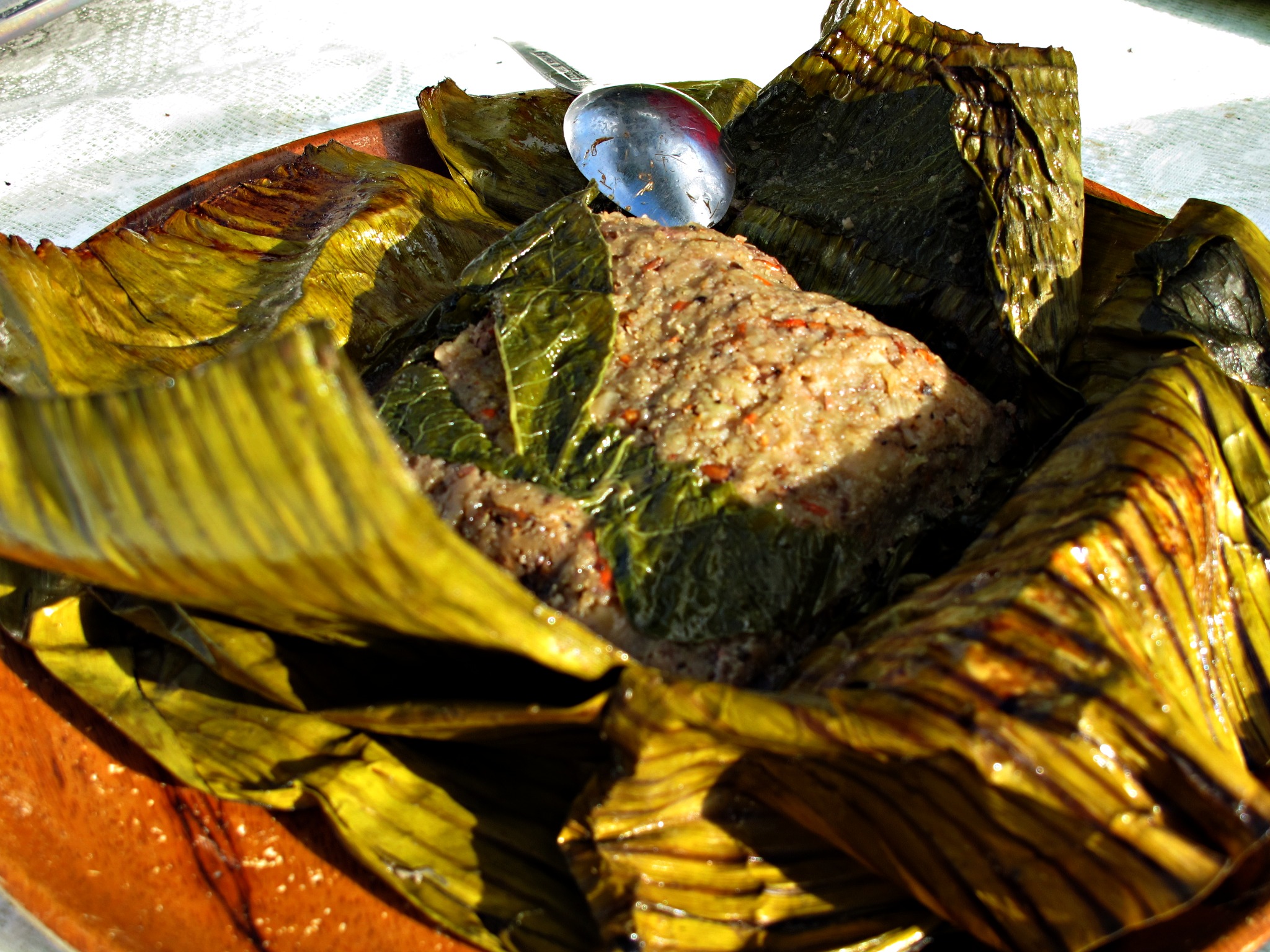
“Hindi mo na kailangan ng kanin!” said one of “Biyahe ni Drew’s” cameramen upon getting his fill of the dish. The grated coconut meat has the texture of rice, which makes pinais a healthy alternative to the Filipino food staple.
Craving for pinais? Nawawalang Paraiso Hotel and Resort located in Tayabas City offer this dish for P38 a piece.
For some good ol’ ginataan, have some ginataang suso, a dish that best shows how cuisines of different communities are shaped by their geographical features. Snails are abundant in the rivers of Quezon, whie pako (fern) leaves and, of course, coconuts are also plentiful in the province.
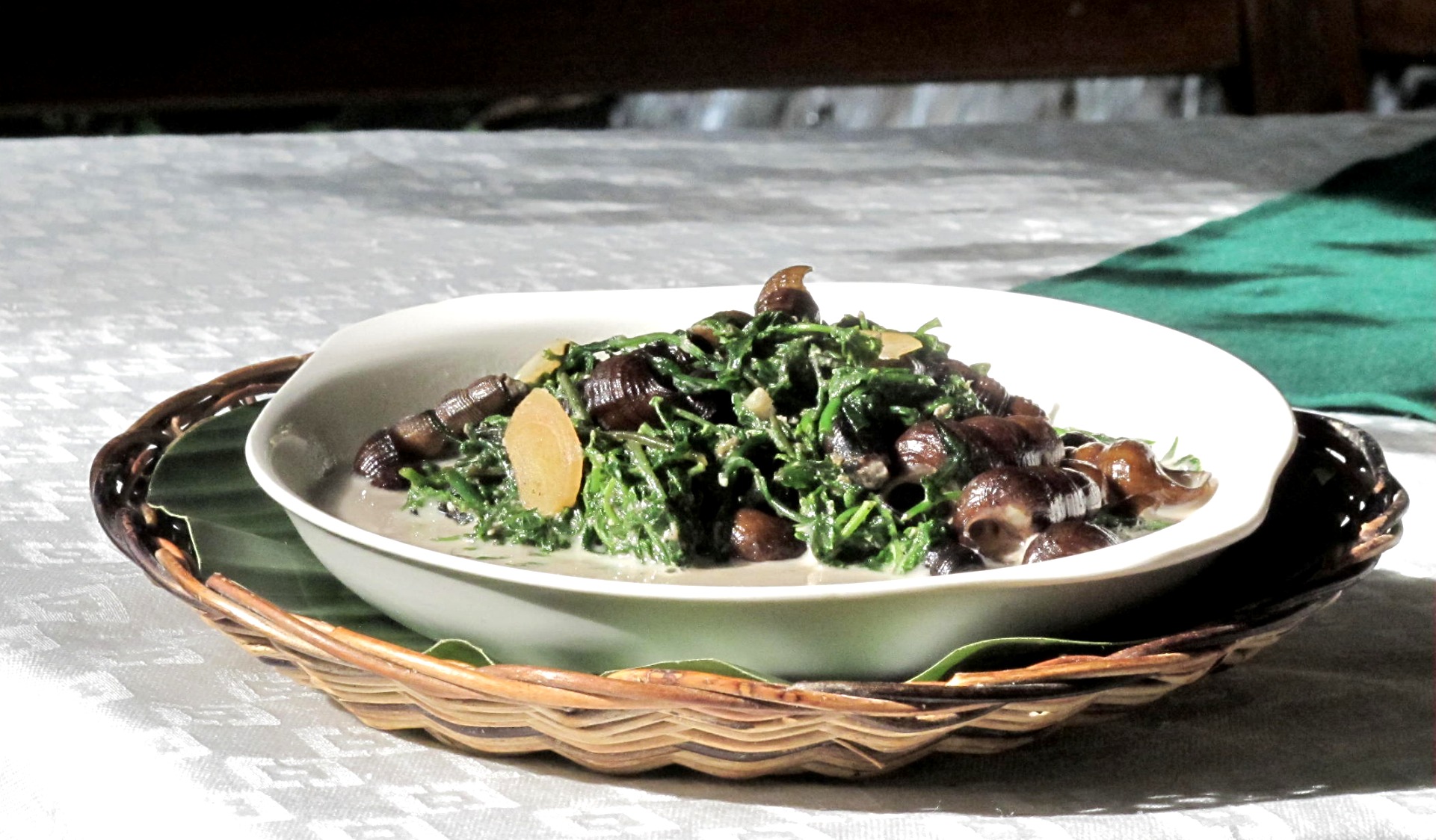
Getting the suso meat from the curved shells is a bit tricky. A “Biyahe ni Drew” pro tip: Forget your utensils! Grab a toothpick to pluck out the snail meat. But if you want the real experience, you can suck the meat out. Just make sure your facial muscles can handle it!
In terms of flavor, the muddy and almost metallic taste of the suso is overpowered by the creamy coconut milk. Texture-wise, the chewy meat contrasts well with the crunchy paco leaves.
If you want a taste of ginataang suso, head on over to Kamayan sa Palaisdaan in Brgy. Dapdap, Tayabas, Quezon. A serving good for three to four people costs P150.
Meanwhile, another local favorite is the sinugno – grilled tilapia in coconut milk. The name comes from the word “sinunog” because of how the inihaw na tilapia is cooked.
Because tilapia is a freshwater fish, it has hints of muddiness about it. This is where the creaminess of coconut milk and the peppery flavor of the mustasa work well as the ingredients overpower the earthy and smoky taste of the inihaw na tilapia.
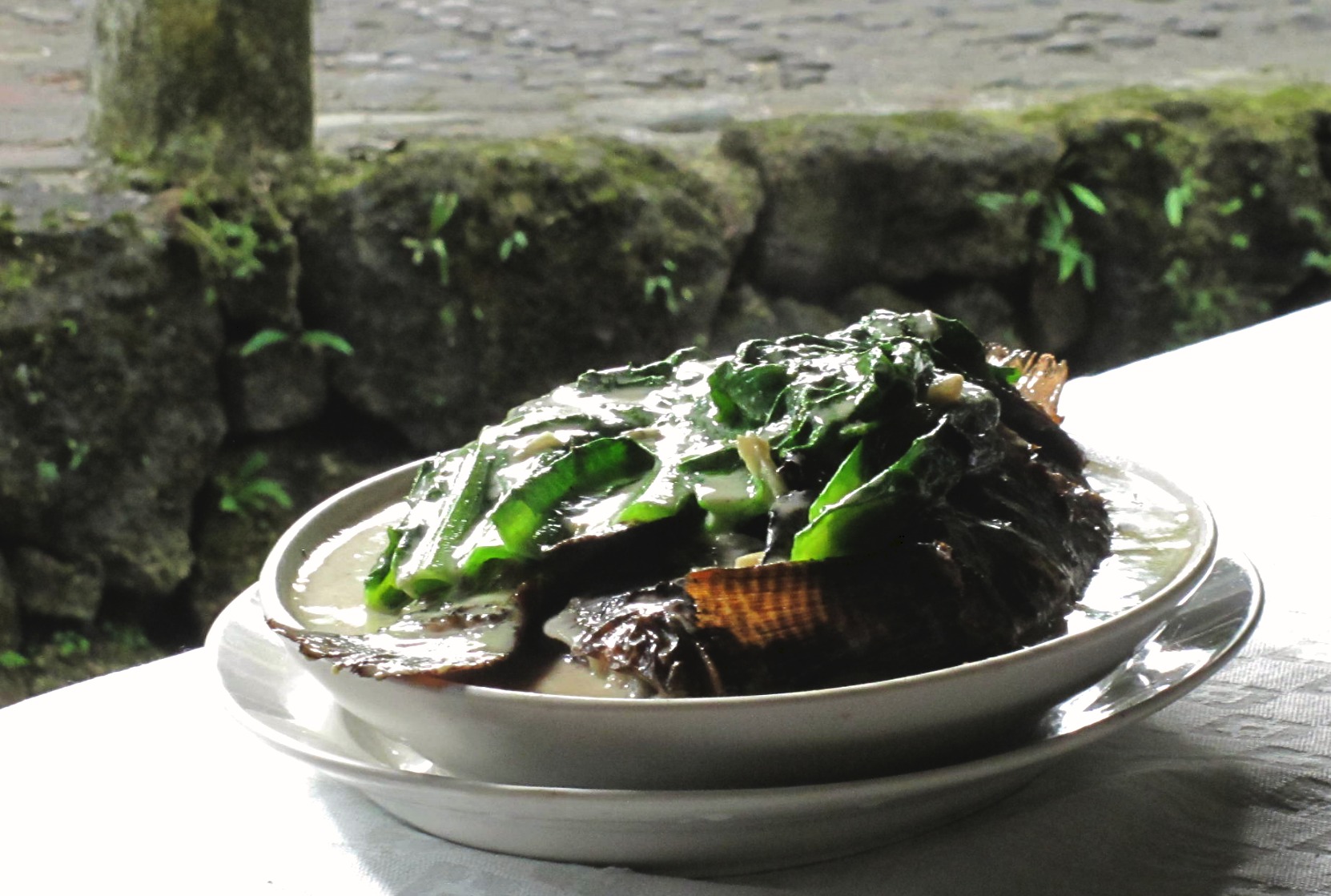
At first, I wasn’t expecting much from sinugno as ginataang tilapia is a common dish. It was the creaminess of the coconut, however, that did the trick. It has a richer flavor and thicker consistency. Coconuts in Quezon may have a better quality than in the city!
One serving of Sinugno costs P305 (good for 3-4 people) at Kamayan sa Palaisdaan, Brgy. Dapdap, Tayabas, Quezon.
Noodle classics and other treats
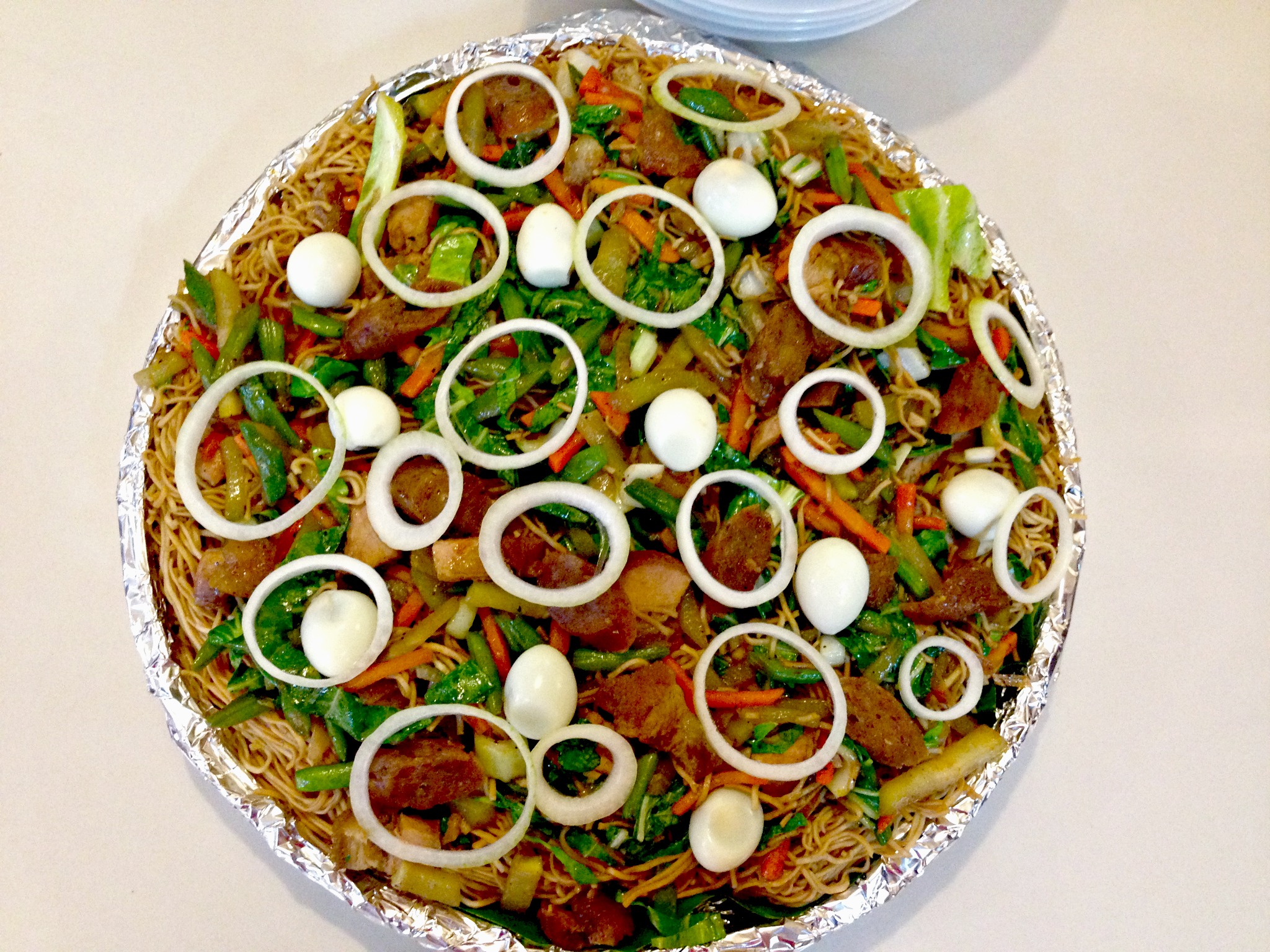
One of the most famous dishes associated with Quezon is the pansit habhab, made from dried flour noodles or miki. It is called habhab because of the way it’s eaten. The noodles – topped with sauteed vegetables, chorizo and quail eggs – are served on a banana leaf where you can eat them directly without using spoon and fork.
The pansit, with all the ingredients, already has a rich flavor, but locals recommend adding vinegar. The vinegar, surprisingly, brings out the full flavor of the otherwise sweet chorizo.
Eating pansit habhab the traditional way can also be a fun dining experience with your friends and family. The “Biyahe ni Drew” crew can attest to this by trying to finish one whole bilao as quickly as they can with only banana leaves at their disposal.
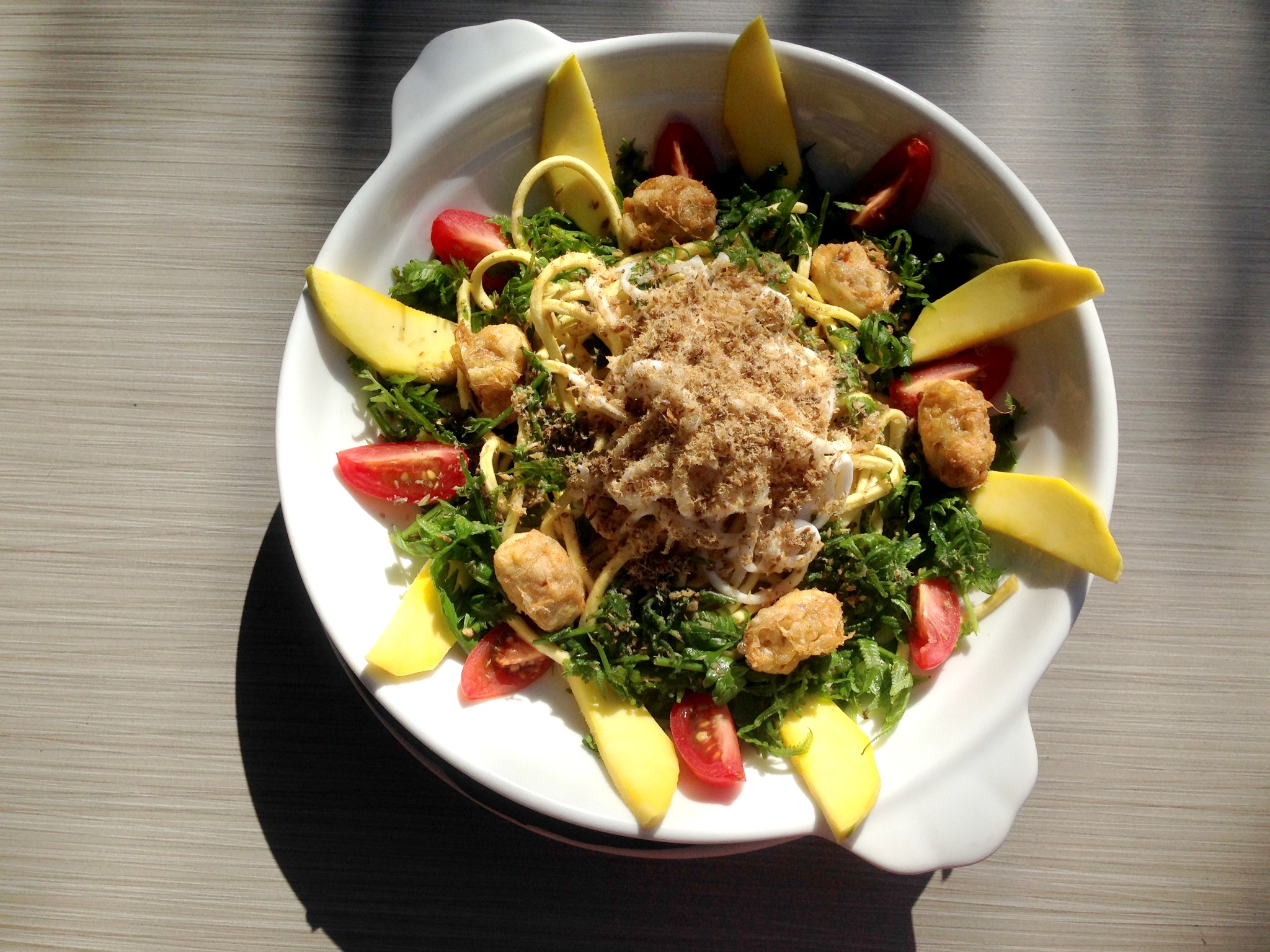
Another take on a local noodle favorite is chami, a traditional dish in Lucena composed of stir-fried flat miki noodles and sauteed meat and vegetables. At Guisseppe Restaurant, they make good use of the abundance of coconuts and pako leaves.
The creaminess of the coconut makes the chami all the more flavorful while the crunch pako leaves contrast well with the soft noodles.
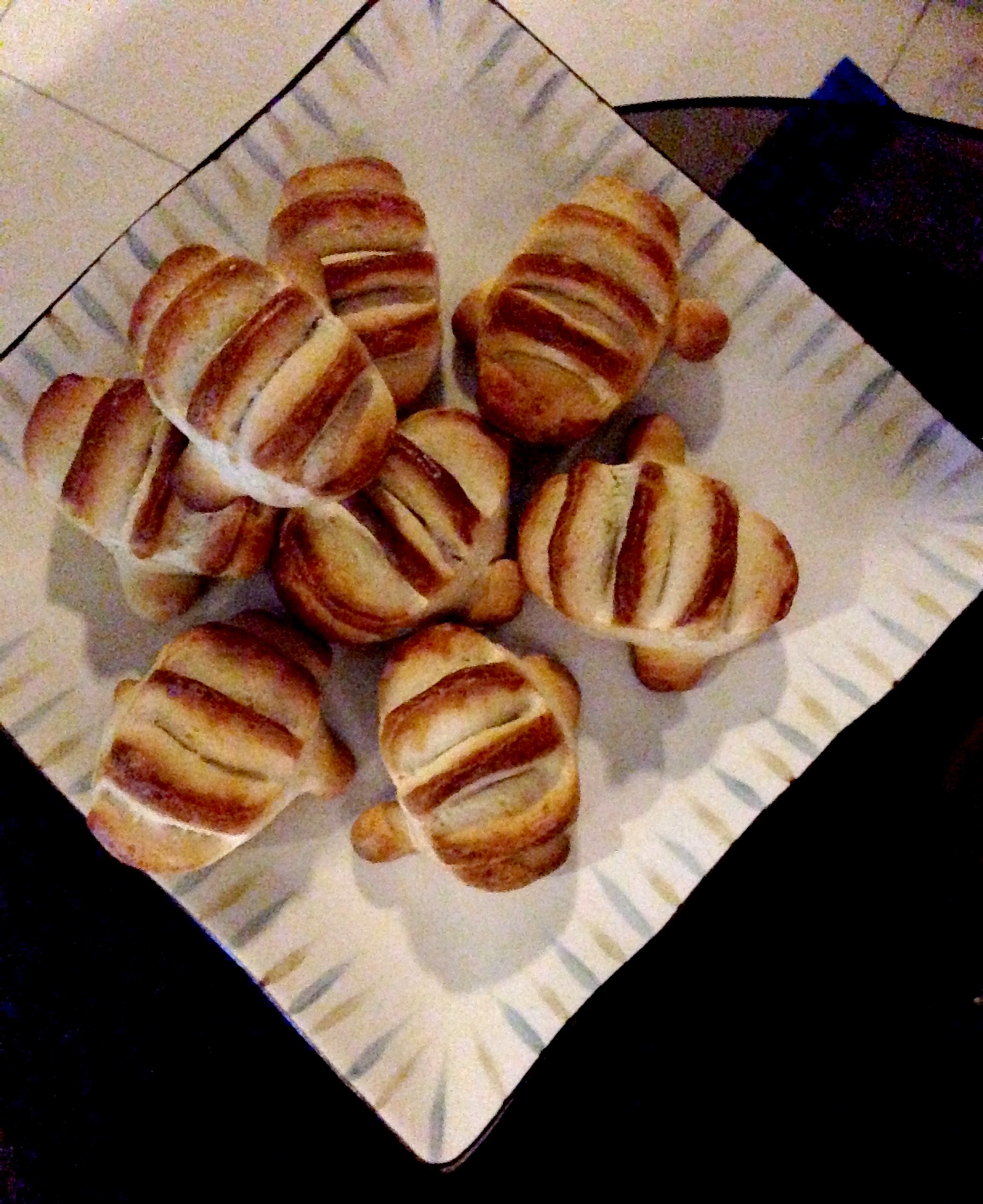
For a quick snack, try pinagong. True to its name, it’s shaped like a turtle, and has an exterior that’s tough to crack. But once you bite into the hard shell, buttery flavors will overwhelm your taste buds.
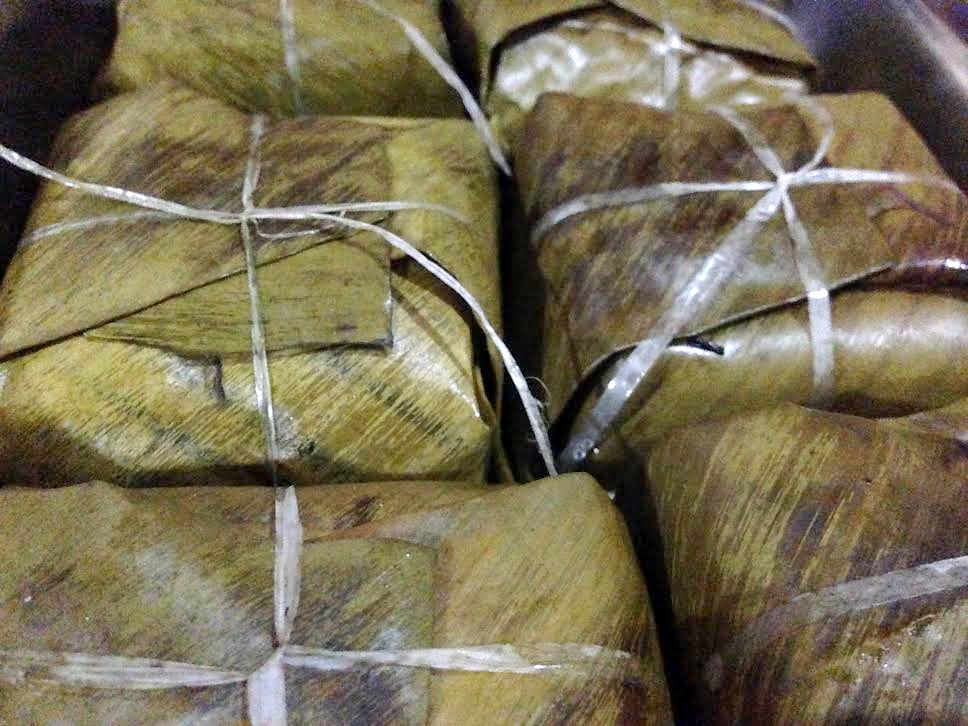
For a sticky treat, try the Quezon tamales (P70/tamales), made from grounded rice shaped into squares and topped with meat and slices of boiled eggs. The delicacy is wrapped in banana leaf perfect for those who want a heavy packed lunch on-the-go.
Favorite Quezon pasalubongs
A trip to Quezon isn’t complete without bringing home longganisang Lucban. This pasalubong is so in demand that the “Biyahe ni Drew” crew had to go back to Eker & El even after the shoot to bring home dozens of these garlicky sausages.
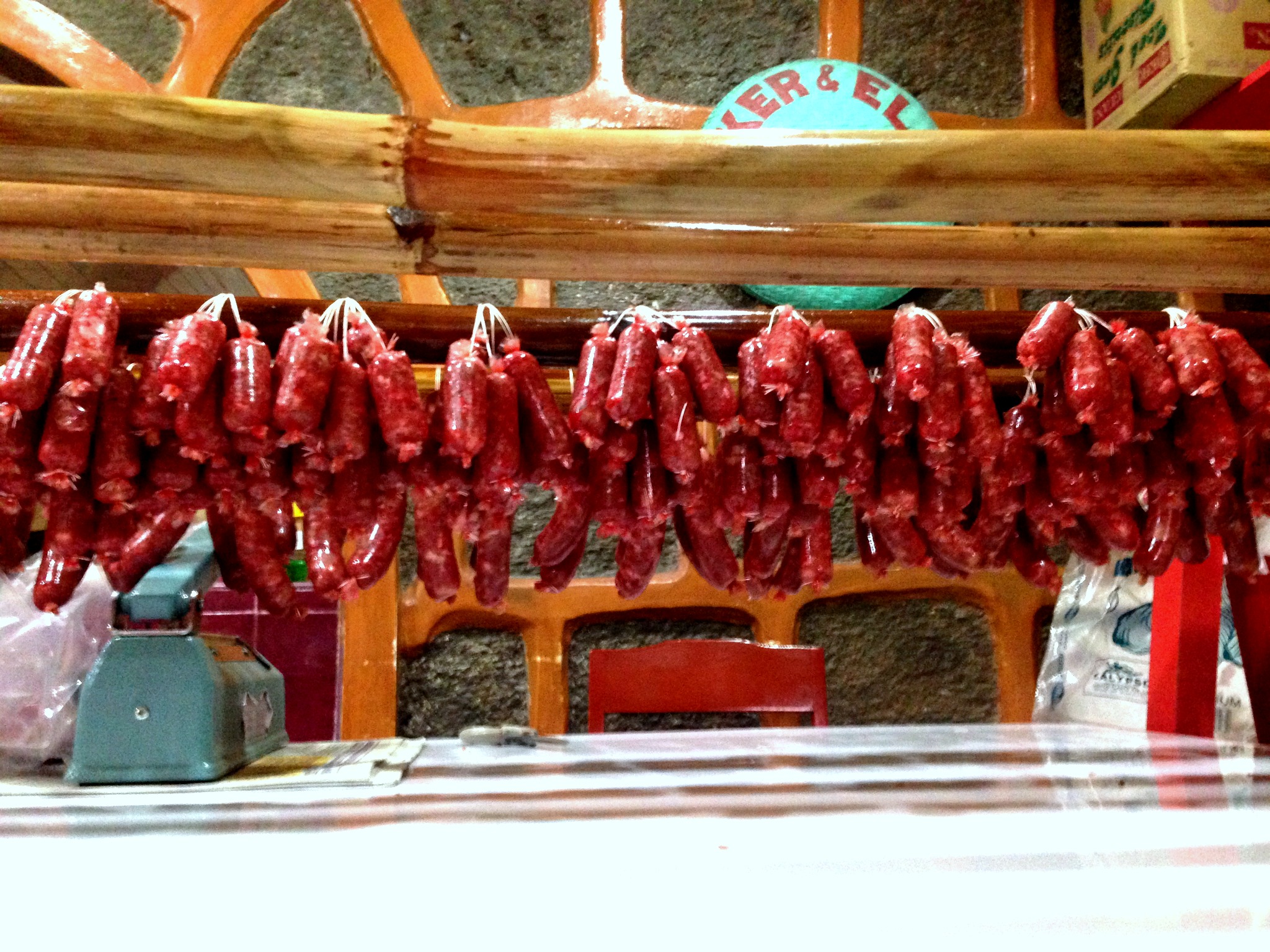
Longganisang Lucban is famous for its distinct garlic flavor that is made richer by its coconut vinegar dip. If you want to wake up to the perfect breakfast, pair the longganisang Lucban (P70/dozen, small; P140/dozen, big) with sinangag and fried eggs!
For pasalubong that’s really reminiscent of Quezon, bring home kiping. Kiping is the colorful leaf-shaped decorations used during Pahiyas festival. It is made from dahon ng kabal and giniling na galapong combined with food coloring. More than its decorative use, it can make for a very colorful pica-pica. All you need to do is grill it for three to five seconds. Kiping in itself is just bitter so better dip it in vinegar, garlic yoghurt or mayo.
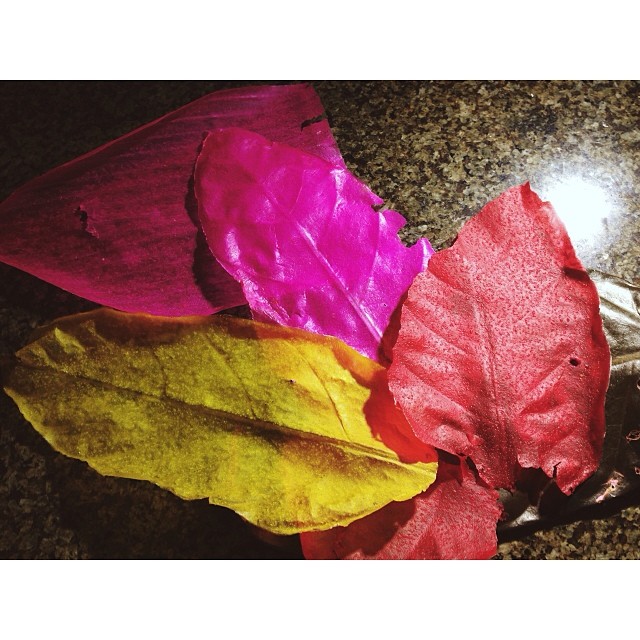
During Drew’s visit to Lucban, he discovered that in the past, banana leaves were used for kiping instead of the now-used kabal. “Kaya ito’y napili ng mga Lucbanin kasi noong araw, sa history ng Pahiyas, nagkaroon ng isang malakas na bagyo sa Lucban, ang ginagamit kasi noong araw, dahon ng saba,” said Mang Bert Teofe, a local kiping maker. “Nasira noon ang lahat ng sagingan at naghanap ng alternatibo ang bayan ng Lucban para sa kiping. At ito ang sinubukan.”
And for the finale: a shot of lambanog! Lambanog is distilled coconut wine made from fermented sap from the coconut tree. The original lambanog is colorless, has a light and mildly sweet flavor, and has an alcohol content that ranges from 40 to 45 percent.

At Capistrano Distillery’s lambanog, the liquid smoothly slides down your throat until you feel its powerful punch. Sweet inebriation.
Bring home a bottle of lambanog from Capistrano Distillery. A 750 ml bottle of flavored lambanog (liputi, bubblegum, prunes) costs P210, while a 750 ml bottle of original lambanog costs P130.
— CM, GMA News




